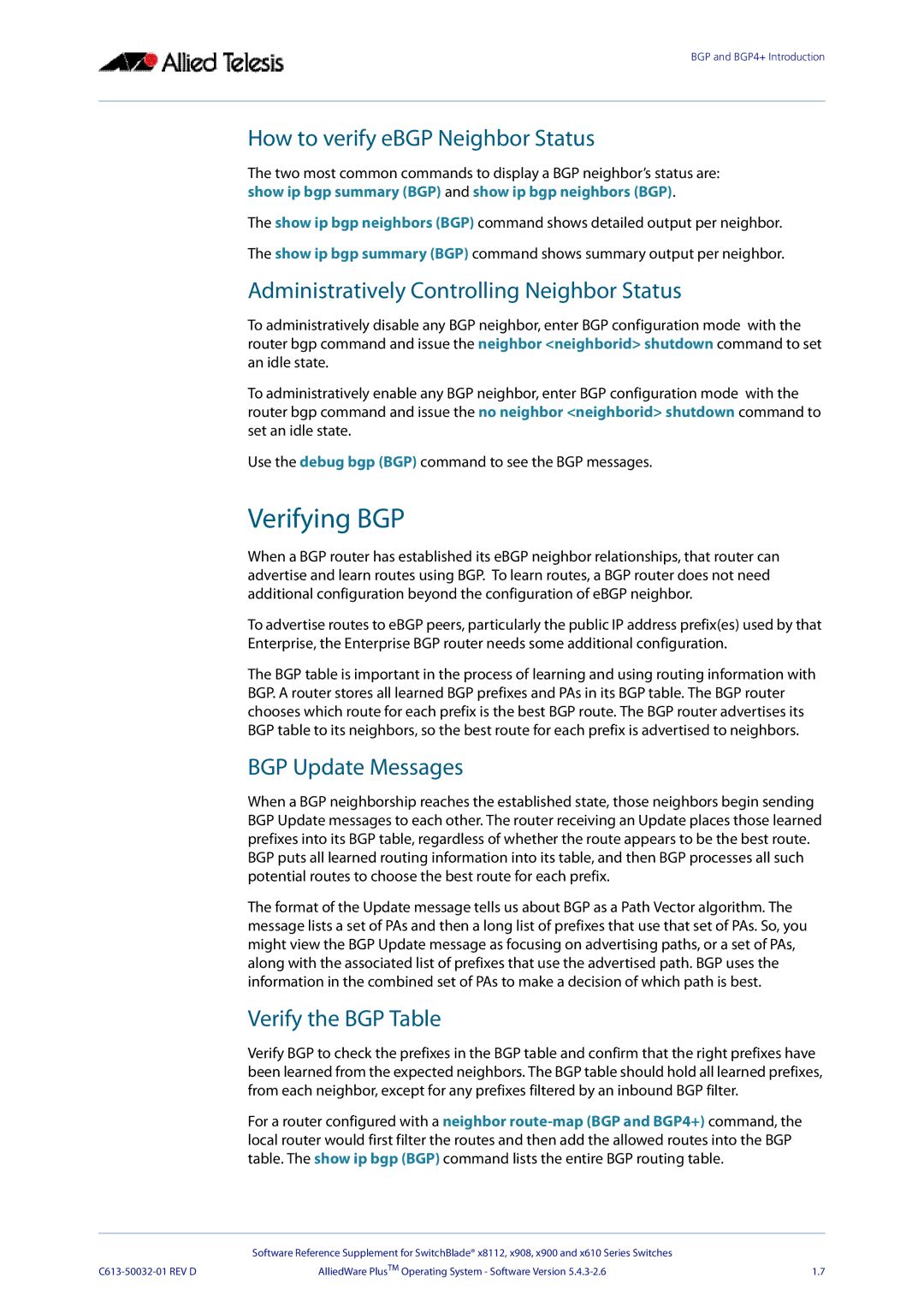
BGP and BGP4+ Introduction
How to verify eBGP Neighbor Status
The two most common commands to display a BGP neighbor’s status are: show ip bgp summary (BGP) and show ip bgp neighbors (BGP).
The show ip bgp neighbors (BGP) command shows detailed output per neighbor.
The show ip bgp summary (BGP) command shows summary output per neighbor.
Administratively Controlling Neighbor Status
To administratively disable any BGP neighbor, enter BGP configuration mode with the router bgp command and issue the neighbor <neighborid> shutdown command to set an idle state.
To administratively enable any BGP neighbor, enter BGP configuration mode with the router bgp command and issue the no neighbor <neighborid> shutdown command to set an idle state.
Use the debug bgp (BGP) command to see the BGP messages.
Verifying BGP
When a BGP router has established its eBGP neighbor relationships, that router can advertise and learn routes using BGP. To learn routes, a BGP router does not need additional configuration beyond the configuration of eBGP neighbor.
To advertise routes to eBGP peers, particularly the public IP address prefix(es) used by that Enterprise, the Enterprise BGP router needs some additional configuration.
The BGP table is important in the process of learning and using routing information with BGP. A router stores all learned BGP prefixes and PAs in its BGP table. The BGP router chooses which route for each prefix is the best BGP route. The BGP router advertises its BGP table to its neighbors, so the best route for each prefix is advertised to neighbors.
BGP Update Messages
When a BGP neighborship reaches the established state, those neighbors begin sending BGP Update messages to each other. The router receiving an Update places those learned prefixes into its BGP table, regardless of whether the route appears to be the best route. BGP puts all learned routing information into its table, and then BGP processes all such potential routes to choose the best route for each prefix.
The format of the Update message tells us about BGP as a Path Vector algorithm. The message lists a set of PAs and then a long list of prefixes that use that set of PAs. So, you might view the BGP Update message as focusing on advertising paths, or a set of PAs, along with the associated list of prefixes that use the advertised path. BGP uses the information in the combined set of PAs to make a decision of which path is best.
Verify the BGP Table
Verify BGP to check the prefixes in the BGP table and confirm that the right prefixes have been learned from the expected neighbors. The BGP table should hold all learned prefixes, from each neighbor, except for any prefixes filtered by an inbound BGP filter.
For a router configured with a neighbor
| Software Reference Supplement for SwitchBlade® x8112, x908, x900 and x610 Series Switches |
|
AlliedWare PlusTM Operating System - Software Version | 1.7 |
